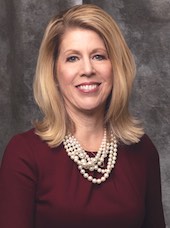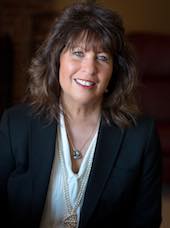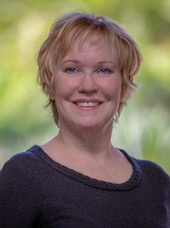11 minutes
… and how to avoid them.
Women make up the lion’s share—or should we say “lioness’s share”?—of membership at U.S. credit unions, but their representation on credit union boards is sorely lagging.
Recruiting more women to fill board positions is not just a matter of checking off a box. It needs to be done well, avoiding mistakes that could lead to tokenism rather than a good-faith effort to find the most qualified women who can contribute to good governance.
By being aware of some of the following mistakes, credit unions can take steps to avoid them.
Mistake #1: They under-recruit for women.
“It’s not new that females, who represent more than half of credit union membership nationwide, continue to be underrepresented in the boardroom,” says Nancy Herbert, Ph.D., who has served as a director for more than two dozen organizations, including two credit unions.
Herbert’s experience in credit unions led her to conduct extensive research on the topic of gender disparity on credit union boards en route to earning a doctorate in organizational development and leadership from Ashford University, San Diego.
“The glacier pace of incorporating gender diversity in our boardrooms precipitated my research about the underrepresentation of females on credit union boards,” Herbert reports. “A historic look at female representation on credit union boards nationwide showed a growth from 25% in 2005 to 36% in 2020, averaging less than 1% growth per year.”
Herbert derived these figures from two reports: Entrenched or Energetic? Improving Credit Union Board Renewal, co-authored by Antonio Spizzirri and Matt Fullbrook of the David and Sharon Johnston Centre for Corporate Governance Innovation at the Rotman School of Management, University of Toronto; and The State of Credit Union Governance, 2020, a joint project of the Johnston Centre, CUES strategic provider Quantum Governance L3C, Herndon, Virginia, and CUES.
A key conclusion of these two reports is that demographic diversity is an integral component of effective board governance, but with female board representation improving by just 3% in the past five years, Herbert notes, “we have not been very successful in moving the needle to address gender balance.”
To help boards develop strategies for greater success in this area, Herbert has launched The Boardroom Sage LLC, a coaching and consulting business in Longmont, Colorado, that focuses on gender diversity, board succession, board recruitment, leadership and team building.
While credit unions in the aggregate have underrepresentation of women in the boardroom, Herbert notes that some boards are bucking that trend with a majority of board seats—and in some cases, all seats—going to women.
A case in point is $180 million Guadalupe Credit Union in Santa Fe, New Mexico, which currently has four women on its five-member board. In fact, women have been in the majority on the board for the past 20 years.
“It helps that we have a CEO who is a woman (CUES member Winona Nava), and our upper management is also majority women,” says Linda Medina, board chair and the 2019 CUES Distinguished Director. “I think one of the reasons we have done so well in attracting women is because we have a culture that emphasizes family—not that men don’t value families, but it helps our credit union be more inclusive of women because of how family-oriented we are.”

CUES member Caren Gabriel, CEO of $2.6 billion Ascend Federal Credit Union in Tullahoma, Tennessee, enumerates various reasons to strive for more balanced representation of women on CU boards.
“One of the primary benefits of gender parity is that your board will have more diversity of opinions on topics that matter,” Gabriel says. “Women look at issues differently than men. For example, they can provide insight into how certain issues will resonate with young women, older women or single women who are the head of household. When you bring together different viewpoints, the board can make better, more informed decisions for the company and its strategy.”
Gabriel speaks from experience, given that she currently serves on the board of CUNA Mutual Group (a position that landed her on the list of WomenInc.’s 2019 Most Influential Corporate Board Directors).
Mistake #2: They lack a plan for recruiting women.
“Boards don’t need to achieve gender parity overnight,” Herbert says. “A best practice is to develop board succession planning with a focus on the future of the credit union.”
Credit union boards can use several strategies to accelerate their journey to gender parity. “One option that would allow you to fast-track that goal, if your bylaws permit, is to expand the number of members on your board,” Herbert observes.
Another option is to implement strategies that would encourage regular turnover of board members. Though this can be a touchy subject for some CUs, especially in situations where directors have served on the board continuously for decades, one strategy would be to implement term limits.
At Ascend CU, Gabriel reports that term limits have had a positive effect on recruitment because they “required our board to have a succession plan in place to identify and recruit new members who have a different background. There is a process to evaluate the skill sets of board members so they can provide the diversity of opinion our company needs to grow and thrive. Recruiting a person who you don’t know is not easy, but it’s necessary in order to have a high-performing board.”
Mistake #3: Their boards look for professional capital at the expense of social capital.
In her dissertation, Herbert addressed the issue of the deficit of “social capital,” citing 2015 research from Darlene Booth-Bell on the importance of gender diversity in governance as a means for achieving a desirable balance of professional and social capital.
“Professional capital describes the cumulative experiential and occupational expertise useful to the current or future needs of an organization,” Herbert says. “On the other side of the equation, social capital is made up of the demographic and cultural attributes that individuals bring to an organization, which includes gender, age, ethnicity, sexual orientation and geographic diversity that connects us to a variety of cultural and community networks.”
The underrepresentation of women skews the balance of social capital and member representation, Herbert notes. Thus, it’s important for boards to recruit candidates who can fill in these gaps.

Social capital also refers to so-called “soft skills,” encompassing such attributes as temperament, relatability and values. “Values are especially important because they help the board determine when considering individuals for board seats whether there’s a good cultural fit,” Herbert says. “A best practice is to strive to have diverse professional and social capital that will best serve the future needs of the credit union, and gender diversity is an essential part of that.”
With women well-represented on its board, Guadalupe CU has achieved a balance of professional and social capital. When recruiting new board members, the credit union looks for individuals who can help maintain that balance.
“We look for such things as enthusiasm and also if they have a specific talent in HR, IT or other areas in which we’re in need of expertise,” Medina explains.
Guadalupe CU maintains its social capital not only by recruiting women but also by recruiting young people. According to Medina, recruiting board members from among millennials and Gen-Xers helps ensure a continuing infusion of fresh ideas.
Mistake #4: They don’t conduct a broad enough search.
According to the Rotman report, credit unions mostly rely on word-of-mouth from current directors and staff to recruit board candidates and/or draw candidates from non-board committees. These recruitment practices typically lead to selecting new directors who are similar to incumbents. On boards that are mostly male, this hampers the movement toward greater gender diversity.
To aid in the quest for diversity, Herbert recommends that boards assess the types of professional and social capital that would best serve their credit unions and design a recruitment plan using that as a base. It is also possible to seek out a combination of diversity markers in board candidates, such as gender, age and ethnicity. “This mostly entails a shift from board members co-opting friends and colleagues to seeking out the specific attributes you need and knowing where to find them,” she says.
Gabriel says her board has done a lot of work on its director recruitment process. Beyond leveraging term limits, her directors “are thinking strategically and made a decision to move beyond finding new board members the old way—like asking people they know to find out if a friend or acquaintance would be interested in being a board member.”
At Guadalupe CU, recruitment of new board members focuses on values. “Basically what we’ve done is recruited from our partner organizations, because they have similar values,” Medina says. Among these partner organizations are Somos Un Pueblo Unido, a state-wide community organization working in support of the Hispanic community, and the New Mexico Association of Government Accountants, which serves professionals in the government financial community by providing quality education and fostering professional development.
Guadalupe CU also spreads the word about board openings through online advertising and direct contact with members during branch visits.
“The [member service representatives] will strike up a conversation and ask them if they would like to apply,” Medina reports.
In fact, it was through an in-branch conversation that Medina herself was recruited to serve as a credit union volunteer approximately 25 years ago.
To avoid pitfalls in recruiting, Deedee Myers, Ph.D., MSC, PCC, CEO of CUESolutions provider DDJ Myers Ltd., Phoenix, recommends that boards do not self-recruit but rather leave the search process to the experts.
“Insist on a diverse pool of candidates,” Myers advises. “Your search firm should already be in the practice of diversity, equity and inclusion.”

Mistake #5: They make assumptions based on gender.
Stereotypical biases can creep into a selection process, but they need to be left at the door. Here are several assumptions that can trip up credit union boards, according to Myers:
- That a woman is unable to have a career and be a partner and/or mother. As Myers explains, “It is her choice and opportunity to step into her oneness, her power.”
- That the chair needs to be a woman because of the perception that a woman is more nurturing. “The role of the chair is vital to the performance of the board, and the best-qualified person needs to be in that role,” Myers says.
- That it’s OK to call board members “girls.” Myers stresses: “They are board members; use gender-neutral language.”
Myers recommends a number of steps for avoiding these biases, including bringing in subject matter experts who will help the board see its blind spots. It’s also important for boards to evaluate what questions they should ask a potential board member—even to the point that interview questions are vetted by a third party.
Myers further advises credit unions to schedule a rigorous annual board development workshop or seminar to elevate board performance. “Be careful about making the most comfortable decision,” she cautions. “Step into diversity.”
Mistake #6: They recruit one or two women rather than change their culture.
Recruiting women to join the board requires a true commitment to diversity. Herbert reports that credit unions need to ask: “Is your boardroom culture compatible with a diverse group of voices?”
Having one or two women on the board may not be sufficient to achieve a cultural change, Herbert adds. “To reach the most positive effects of gender diversity, it is gender balance, not simply a gender representation, that is key.”
Myers similarly stresses the need for achieving a transformative change in the organization. “Many boards are looking for a methodology to drive transformational change to be the highest-performing board possible. Invariably, the conversation leads to diversity, equity and inclusion throughout the boardroom, board practices, interpersonal board relationships, and the relationship [with] and oversight of the CEO.”
Achieving transformative change requires much more than implementing a new or revised board policy, Myers adds. “Transformative change includes a holistic, humanistic and dynamic organizing principle to bring about widening perspectives of seeing the whole person versus the color of skin, gender or sexual preference, for example. Unfortunately, when a board member intentionally or unintentionally crosses a line of subtle or not-so-subtle discrimination, too often the transgression goes unnoticed or is not corrected.”
Myers recommends that boards take the time to reflect on how their mindsets and perspectives could inappropriately influence outcomes as it pertains to recruitment. While acknowledging that reflection practices in boardrooms are not standard, she nonetheless encourages it as a means of assessing language and attitudes to encourage more openness toward those who offer diverse experiences and perspectives.
“Boards that practice self-reflection are better able to see people for their oneness, their own competencies and value to add to the board versus gender as the first filter,” Myers concludes. cues icon
Based in Missouri, Diane Franklin is a longtime contributor to Credit Union Management magazine.





